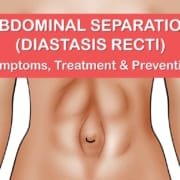1-12 DPO Symptoms: What’s Normal and When to Take a Pregnancy Test
If you’re trying to conceive or simply curious about the process, you’ve likely come across the term DPO. It stands for “days past ovulation” and refers to the critical period when you might be anxiously wondering whether you’re pregnant. In this article, we’ll explore the hormonal shifts, potential symptoms, and important milestones that occur during this phase.
Everyone’s experience is different, and while some may notice distinct symptoms early on, others may not feel anything unusual. This guide offers a general overview of what to expect during the DPO phase, but it’s always best to consult a healthcare provider for personalized insights.
The DPO phase can bring a wave of emotions, excitement, anxiety, or even confusion, as you look for possible pregnancy signs. It’s important to remember that the most reliable way to confirm pregnancy is with a test, ideally around 14 DPO, which is often the first day of a missed period. However, some tests claim to detect pregnancy earlier, so be sure to follow the instructions on the package for accurate results.
What Is Days Past Ovulation (DPO)?
The term DPO is widely used in the TTC (trying to conceive) community and can also stand for “days post ovulation.” If you’re new to fertility tracking, you may also encounter other common acronyms:
- BBT: Basal body temperature (lowest body temperature at rest, used to detect ovulation)
- DPO: Days past/post ovulation
- EPT: Early pregnancy test
- hCG: Human chorionic gonadotropin (pregnancy hormone)
- IVF: In vitro fertilization
- IUI: Intrauterine insemination
- POAS: Pee on a stick (home pregnancy test)
- TTC: Trying to conceive
- TTA: Trying to avoid pregnancy
The 12 days following ovulation are often highlighted as the period when early pregnancy symptoms may begin to appear. However, many of these signs closely resemble premenstrual symptoms, making it difficult to tell whether you’re pregnant or just experiencing your usual cycle changes.
Understanding what happens in your body during the DPO phase can make this waiting period feel more manageable. Let’s take a closer look at the biological processes behind conception and how they might manifest as symptoms.
What Happens During Ovulation?
For pregnancy to occur, ovulation must take place. Ovulation happens around the midpoint of the menstrual cycle when a mature egg is released from an ovary into a fallopian tube. The egg remains viable for about 24 hours, and if it meets a sperm cell during this time, fertilization can occur.
Once fertilized, the egg (now called a zygote) begins its journey toward the uterus, where it will attempt to implant. This marks the beginning of pregnancy. If fertilization does not happen, the egg disintegrates, progesterone levels drop, and the menstrual cycle continues with the onset of a period.
You can use our “Advanced Ovulation Calculator” to better track ovulation, and other important dates related to your menstrual cycle and pregnancy.
1 to 12 DPO: Pregnancy Symptoms and What to Expect
Below is a day-by-day breakdown of what might be happening in your body if conception has taken place. Keep in mind that symptoms vary from person to person, and experiencing or not experiencing these signs does not guarantee pregnancy.
While symptoms can offer clues, the only way to confirm pregnancy is with a test. Now, let’s explore what’s going on biologically during the DPO window.
1 to 3 DPO: Rising Progesterone Levels
If fertilization has occurred, the zygote remains in the fallopian tube for the first 48 hours, undergoing cell division. During this time, hormonal changes begin, but any symptoms you experience will likely be due to rising progesterone, which naturally increases in the second half of the menstrual cycle, whether pregnancy occurs or not.
Symptoms caused by progesterone include:
- Bloating
- Breast tenderness or nipple sensitivity
- Constipation
- Food cravings
- Fatigue
- Headaches
- Muscle aches
Progesterone plays a crucial role in early pregnancy by thickening the uterine lining to prepare for implantation and providing nutrients to the developing embryo. If the egg successfully implants in the uterus, progesterone levels remain high to support the pregnancy.
On the other hand, if fertilization does not occur, progesterone levels will drop, signaling the body to shed the uterine lining, leading to menstruation.
4 DPO Symptoms: The Journey Continues
By 4 DPO, the fertilized egg (zygote) is likely making its way through the fallopian tubes toward the uterus. At this stage, symptoms remain similar to those experienced earlier, as progesterone levels continue to rise as part of the luteal phase.
5 DPO Symptoms: The Zygote Becomes a Blastocyst
At 5 DPO, the zygote is still in transit but has now begun dividing into multiple cells, eventually forming a blastocyst—a small cluster of 100-200 cells. While this development is crucial, symptoms will still be primarily related to increased progesterone, just like in earlier days.
6 DPO Symptoms: Nearing Implantation
By 6 DPO, the blastocyst is approaching the uterus, preparing for implantation. At this point, most people won’t notice any new pregnancy symptoms beyond those caused by progesterone. However, the body is getting ready for an important step in the conception process.
7 DPO Symptoms: Implantation Begins
At 7 DPO, the blastocyst may start implanting into the uterine lining, an essential step for pregnancy to progress. The uterus is only receptive to implantation for a few days each cycle—usually between 6 to 10 DPO—a period known as the window of implantation (WOI).
If implantation is successful, the body will begin producing the pregnancy hormone hCG (human chorionic gonadotropin), which supports the growth of the embryo. However, hCG levels will still be very low at this stage, so you likely won’t notice any hCG-related symptoms just yet.
Instead, you may still be experiencing progesterone-driven symptoms, which tend to peak around 6 to 8 DPO. If pregnancy occurs, progesterone levels will remain elevated to sustain the pregnancy. If not, they will drop in the following days, signaling the start of menstruation.
8 DPO Symptoms: More Implantation Activity
Depending on factors such as the timing of ovulation and fertilization, implantation may still be happening at 8 DPO. As a result, symptoms will be similar to those of previous days, though some individuals might start experiencing very early pregnancy signs.
9 DPO Symptoms: Possible Implantation Bleeding
At around 9 DPO, some people may notice light spotting known as implantation bleeding. This is believed to occur when the blastocyst burrows into the uterine lining, causing a small amount of blood to shed. The spotting is typically light brown or pink rather than bright red like a period.
However, implantation bleeding is not a guaranteed sign of pregnancy. Some individuals may not experience it at all, while others might mistake it for the start of their period. In some cases, light bleeding could be due to dropping progesterone levels, a very early miscarriage (chemical pregnancy), or an unrelated health issue. If you notice abnormal bleeding, consult a doctor for further evaluation.
10 DPO Symptoms: Hormones Start Surging
By 10 DPO, if pregnancy has occurred, hCG levels will begin rising. Research shows that hCG levels almost double every day after implantation, though the exact rate varies from person to person.
Meanwhile, progesterone levels remain high to support early pregnancy. This means you may still be experiencing familiar symptoms such as:
- Fatigue
- Bloating
- Breast tenderness
- Cramping
- Increased appetite or cravings
11 DPO Symptoms: Early Pregnancy Signs Appear
As hCG levels continue to increase at 11 DPO, you may start experiencing some of the classic early pregnancy symptoms, including:
- Increased hunger or unusual cravings
- Fatigue
- Darkening or enlargement of the areolas
- Digestive changes such as nausea, cramping, or diarrhea
- Frequent urination
- Heightened emotions or mood swings
- Increased sensitivity to smells or altered taste
- Swollen or heavy breasts
The challenge is that these early pregnancy symptoms can overlap with PMS symptoms, making it difficult to tell whether you’re pregnant or just approaching your period. One way to gain insight is to track your symptoms each cycle to identify what is normal for your body. However, the only way to be certain if you’re pregnant is to take a test.
12 DPO Symptoms: Is It Time to Test?
If you’ve been experiencing unusual symptoms and they don’t align with your typical menstrual cycle, you may be wondering if it’s time to take a pregnancy test. By 12 DPO, hCG levels may be high enough to produce a positive test result, but timing is key.
Can You Take a Pregnancy Test at 12 DPO?
The short answer: Yes, but you may still get a false negative if you use an at-home urine test too early.
The long answer: Pregnancy tests detect hCG (human chorionic gonadotropin), a hormone that is only produced after implantation, which typically happens around 6-10 DPO. However, hCG takes time to build up to detectable levels.
Here’s what to expect based on different test types:
- A blood test can detect hCG as early as 7-12 DPO, making it the most reliable early option.
- An at-home urine test usually won’t pick up hCG until around 12-15 DPO.
If you test at 12 DPO and get a negative result, it may still be too early. For the most accurate result, wait until 14 DPO or the first day of your missed period. If your period doesn’t start and you’re still getting a negative test, try testing again in a few days.
Not sure when you ovulated? A general rule is to wait 21 days after unprotected sex before testing for the most reliable results.
Symptoms After Ovulation in Case you are Not Pregnant
To clarify what’s happening during the 12 DPO window, here are some key differences that can help you determine whether your symptoms indicate pregnancy or just a regular cycle:
- Bleeding: A regular period usually begins around 14 DPO. In contrast, implantation bleeding (if it occurs) happens earlier—between 7-14 DPO—and is much lighter in flow, often pink or brown in color.
- Breast Changes: Tender breasts are common in both PMS and early pregnancy. However, pregnancy symptoms may also include darkening and enlargement of the areolas, along with increased breast swelling.
- Cravings: PMS cravings tend to follow a pattern (chocolate, carbs, salty foods). If you suddenly crave foods outside your norm—or develop food aversions—this could be an early pregnancy sign.
Ultimately, every person’s body is unique, and symptoms can vary widely. Tracking your symptoms each cycle can help you notice patterns and identify potential early pregnancy signs.
When to See a Doctor
If you’re trying to conceive or suspect you might be pregnant, checking in with a doctor can provide personalized guidance and early pregnancy confirmation.
Reasons to consult a doctor include:
- You want to confirm pregnancy before an at-home test would be reliable.
- You’re experiencing unusual symptoms or severe discomfort.
- You have concerns about your fertility and want professional advice.
While waiting until 14 DPO for an accurate home pregnancy test can feel like forever, a blood test from your doctor can confirm pregnancy even earlier. If you’re unsure, don’t hesitate to reach out to a healthcare provider for expert support.










